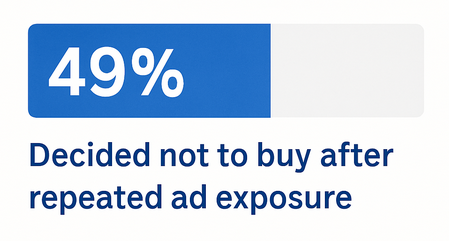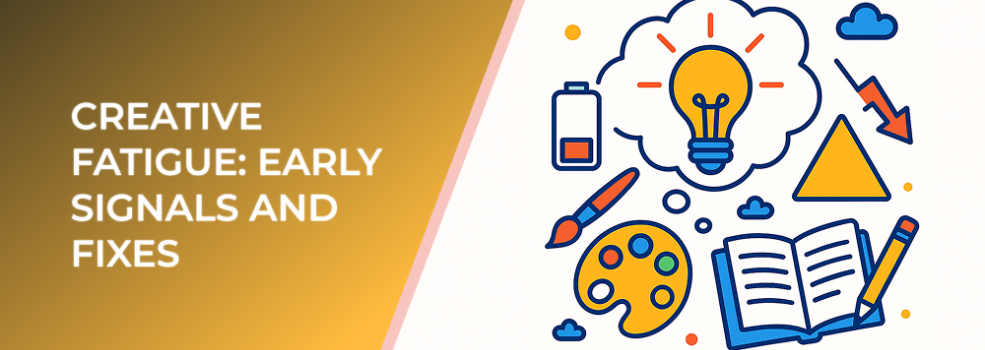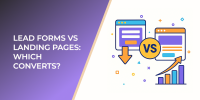Creative fatigue occurs when your audience sees the same ad creative too many times, leading to declining engagement and rising acquisition costs. As competition for attention increases across digital platforms, marketers need to detect early warning signs before performance erodes.
What Causes Creative Fatigue?
Creative fatigue is driven by repetitive exposure. When ads stop feeling relevant or fresh, users no longer respond to them the way they did early in a campaign. Several factors contribute:
-
Overused visuals
-
Stagnant messaging
-
Long-running campaigns without variation
-
Narrow audience segments repeatedly exposed to identical content
-
High impression frequency

Nearly half of consumers say repeated ad exposure causes them to opt-out of buying
According to industry data, ads typically begin showing signs of fatigue after reaching an average frequency of 6–10 exposures. In addition, research shows that campaigns without creative rotation may see CPA rise by up to 30% within the first 2–3 weeks.
Early Signals You Should Monitor
Identifying creative fatigue early allows you to react quickly before an underperforming ad drains the budget.
1. Declining CTR
A rapid or steady drop in click-through rate is one of the clearest indicators. If CTR decreases by more than 15% week-over-week, fatigue may be the cause.
2. Rising CPA
Cost per acquisition often climbs as engagement weakens. An increase of 20–40% can indicate that your creative is no longer appealing enough to drive conversions.
3. Higher Impression Frequency

Creative fatigue often kicks in when users see the same ad 6 to 10 times
As frequency rises, fatigue becomes more likely. When users see the same ad multiple times per day, performance tends to decline.
4. Lower Relevance Metrics
If platforms provide relevance diagnostics, monitor quality, engagement, and conversion rankings. A downward shift can signal audience wear-out.
5. Shorter Engagement Windows
Analytics often show that engagement peaks early in a campaign and drops sharply as the audience becomes saturated.
Fixes That Restore Campaign Performance
Fortunately, creative fatigue is preventable—and reversible—with the right optimization strategies.
Refresh Visual Elements
Updating visuals can deliver an immediate performance improvement. Small adjustments, such as new color palettes, layout changes, or fresh product angles, can re-engage users.
Test New Messaging
If performance drops, test alternative headlines, value propositions, or calls to action. Even subtle shifts in tone can reset audience interest.
Rotate Creative Regularly
Campaigns perform best when creative assets rotate before fatigue occurs. Many marketers follow a 10–14 day rotation schedule depending on budget and audience size.
Expand or Adjust Audience Segments
Broadening your reach distributes impressions and delays fatigue. Conversely, refining segments based on recent engagement can increase ad relevance.
Introduce Seasonal or Topical Elements
Timely content often performs better and remains relevant for longer. Seasonal visuals or event-driven messaging can refresh campaign momentum.
How to Build a Fatigue-Resistant Workflow
To maintain stable performance:
-
Set automated alerts for CTR, CPA, and frequency shifts
-
Maintain a creative backlog so new assets are always ready
-
Use A/B testing to validate new variations
-
Diversify format types (video, static, carousel)
-
Adopt shorter cycles for high-budget campaigns
A structured workflow ensures that fatigue never catches your campaigns off guard.

